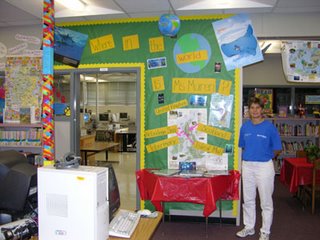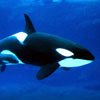Day 5 - Leaving Loch Tarbert Jurar

Going out of Loch Tarbert Jurar (N side of Jurar)and sailed out toward Colonsay - where we saw the Minke Whales and porpoises for about 2 hours. We left the inside of Colonsay and headed for the Garvellachs. Continued North to the Sound of Kerrara just off of Oban. We are at Lat 56 degrees 22.62N Lon 005 degrees 30.00 W. It's a beautiful night. We had a great day! Rain was intermitant. Mostly at the very last few minutes of our sighting duties for the day.
Being in the dinghy. After we'd been watching the whales for about an hour or so Laura decided it would be a good opportunity to take some photographs for the photo id library. It took Sarah and Karen less than a second to ask if they could join Laura and Peter in the dinghy. Within minutes the dinghy was in amongst the manx shearwater and other feeding birds. Then one whale came up on starboard, then another. They surrounded the boat as they all fed heartily. At one point one whale came up inches away from the boat - we could feel the boat move as the whale surfaced. We couldn't get the camera to work but we have some fantastic views - it really felt like we were right amongst them. You could smell the fish as the whales feed and the manx shearwater were diving beneath the boat to feed at the same time.
It was amazing watching the dinghy go out into the water. I was standing with Hilda at the bow watching the whales and the dinghy and then suddenly a whale soared up at the back of the dinghy. Sarah and Karen with Skipper Peter and scientist Laura were looking towards the front of the dinghy so didn't see it but certainly felt the impact. Those of us on the yacht just watched as the minke whale leapt out of the water to catch more fish showing its throat grooves. An unforgettable and indescribable moment! Take a look at one of the books on whales to see an example of a whales throat grooves.
We will be heading back to Tobermory tomorrow - anchor there, clean up the boat.







0 Comments:
Post a Comment
<< Home